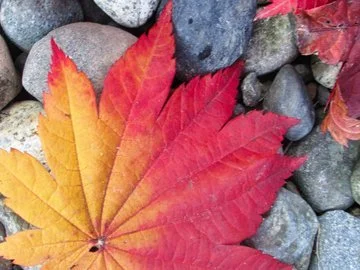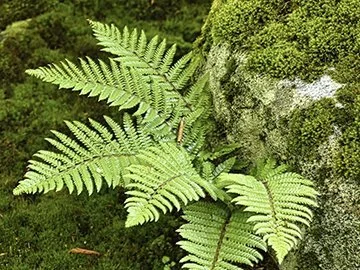Rhododendron Collection: April
Plant Area Map — Camellia Collection
About Rhododendron
Rhododendron / Azalea • シャクナゲ / ツツジ • 石楠花 / 躑躅 • shakunage / tsutsuji
Azaleas have been cultivated in Japan since the Kamakura period (1185-1333), particularly during the Edo period (1600-1868). In Seattle Japanese Garden we have varieties that bloom April through June. This brochure is dedicated to the very first bloomers in April; their blossoms often come before they leaf out, and their colors are often subtle hues, unlike the more exuberant May and June Rhododendrons and Azaleas.
Rhododendron and azaleas are admired and revered for their attractive flowers and handsome foliage in many countries and across many cultures, with countless festivals timed to occur when the shrubs are in bloom.
In the past Rhododendron and Azalea were each a separate genus in the Ericaceae (Heath) family. However, Azaleas were reclassified to be part of the Genus Rhododendron. So now the botanical name of the azalea is Rhododendron and azalea is used as a common name. Common names can lead to confusion but with the Genus Rhododendron they are actually helpful: only azaleas are classified with a common name of Azalea. For example, the botanical name Rhododendron reticulatum has the common name Three Leaf Azalea, while the common name for Rhododendron ‘Brocade’ is Rhododendron ’Brocade’.
There is not a definitive way to tell the difference between the two plants in real life, however here are some characteristics that help:
Azaleas can be deciduous or evergreen, but true rhododendrons are usually evergreen
Azaleas have funnel shaped flowers, and rhododendrons flowers tend to be bell-shaped
Azaleas usually have only 5 stamens per lobe, while rhododendrons have 10 or more
There are more than 1200 different natural species in the genus Rhododendron. The largest number of wild species is native to Asia, but they also grow in the temperate regions of North America and Europe, as well as in the tropical regions of Southeast Asia and northern Australia.
Rhododendron quinquefolium, Five Leaf Azalea
Area ZZW, on the west side as you travel north along the service road. It’s near some low bamboos.
This deciduous azalea is native to Central Japan, in rocky ravines. Its species name is quinquefolium, which means “having 5 leaves.”
It’s also known as the Cork Azalea because of its bark, and is a compact, slow-growing plant. The green leaves are sometimes edged in red, and appear in whorls of 4 or 5 at the stem tips. The flowers, which appear with the leaves, are widely bell-shaped & pure white with green spots.
Rhododendron quinquefolium, azalea, Area ZZW
Rhododendron concinnum, Rhododendron
Area B, D, Z, ZZW
Rhododendron concinnum is native to many provinces in China, and was discovered at high elevation in Szechwan. It has widely funnel-shaped flowers, often spotted, and develops a treelike habit with time. Colors range from white to shades of pink, purple & wine-red.
The plant in area B is well visible from the french doors of the Tateuchi Community Room. It’s next to the red flowering Camellia japonica ‘Takayama,’ which blooms at about the same time in spring.
Rhododendron concinnum, Area B
Rhododendron reticulatum, Three Leaf Azalea
Area C, just past the entrance gate and by the fence. Area Y, ZZE, ZZW
This deciduous azalea is widespread within central Japan. Its species name, reticulatum, means “netted,” referring to the appearance of the foliage. Its habit is upright & open, about 6’ tall in 10 years. Bright pinkish or pinkish-purple flowers, sometimes with spots, appear before the leaves. The blooms are funnel-form and held singly or in pairs.
Unlike the simpler classifications used in the West, in Japan the native 3-leaf azaleas are classified into 27 different species & varieties.
NOTE: growing nearby and blooming about a week later, are three R. ‘Mariesii’ (Azalea). They’re 3′ tall & rounded, and have purple flowers similar to those of R. reticulatum, but their leaves and growth pattern differ. Thus the purple lavender color dominates the C area throughout the month of April
Rhododendron reticulatum – three leaf azalea, Area C
Rhododendron keiskei, Rhododendron
Area C
Usually a compact plant, with pale to lemon yellow flowers, held in clusters of 3-5. There are 3 R. keiskei in the SJG -- all well visible.
One is in area C, immediately to the right of the main path, between the gate and the yukimi-doro lantern. Pruned round and covered with flowers (pale yellow).
The two others, next to each other in area B, are best seen from the connector path between areas B and Z. One of them (almost white) is pruned round, and the other (cream yellow) retains a more natural form.
Rhododendron keiskei, Area C; corolla pale yellow, pruned round on the R side of the picture
Rhododendron ‘Brocade’ or R. ‘Bow Bells’, Rhododendron
Area C, behind the Snow-viewing Lantern.
‘Brocade’ is a hybrid of Rhododendron williamsianum, which is native to high elevations in central Sichuan. It and a related R. williamsianum hybrid, ‘Bow Bells,’ were developed in England in 1934 by Lionel de Rothschild, and registered in 1958. They have beautiful heart-shaped foliage that emerges copper, then ages to green.
Their April flowers are bell-shaped, and held in loose clusters, with a much more natural look than the huge flower trusses of most hybrids. With their compact, dome-shaped habit (about 3 ft. tall in 10 years) and elegant beauty, they make excellent plants for small urban gardens.
Rhododendron ‘Brocade’ or R. ‘Bow Bells’, Rhododendron
Rhododendron kaempferi, Azalea (evergreen)
Area F, well visible from bench. Areas V, W, X, W
The SJG has these growing in many areas, and they command attention in mid-spring for their fiery colors and heavy/dense blooming. Ours are mostly orange.
“Rhododendron kaempferi is commonly called the Torch or Kaempfer azalea; in Japan, it is called ‘Yama Tsutsuji.’ R. kaempferi is in the subgenus Tsutsusi, a large section of evergreen azalea species. It is the most common azalea of Japan, being found from the southern island of Kyushu to the northern island of Hokkaido, from sea level to 4000 feet elevation. At home on volcanic slopes, open shrubland and in mixed deciduous forests, this evergreen azalea is an upright growing shrub to 8 feet.” (From the Masschusetts Chapter of the American Rhododendron Society)
Rhododendron kaempferi, azalea; Area F
Rhododendron schlippenbachii, Royal Azalea
Area H (past the 2nd shortcut, by Saucer Magnolia tree): 3 plants, one darker pink than the others. Areas B, Y, D, G, I
This elegant deciduous azalea is native to Korea & Manchuria, Japan, and the Russian Far East. It is the dominant understory shrub in many Korean hillside forests, growing at 1000-5000 feet altitude.
Very hardy, it has an upright, open habit, about 4’ tall in 10 years. Its thinly textured leaves need afternoon shade. The pale pink flowers, often spotted & in trusses of 3-6, appear before or along with the leaves. Often considered to be the finest azalea species.
Its scientific name, schlippenbachii, derives from Baron von Schlippenbach, a Russian officer who collected the species in 1854.
Rhododendron schlippenbachii, Royal Azalea; Area H
March 2022 • Aleksandra Monk, Corinne Kennedy & Kathy Lantz @ SJG docent Plant Committee.












